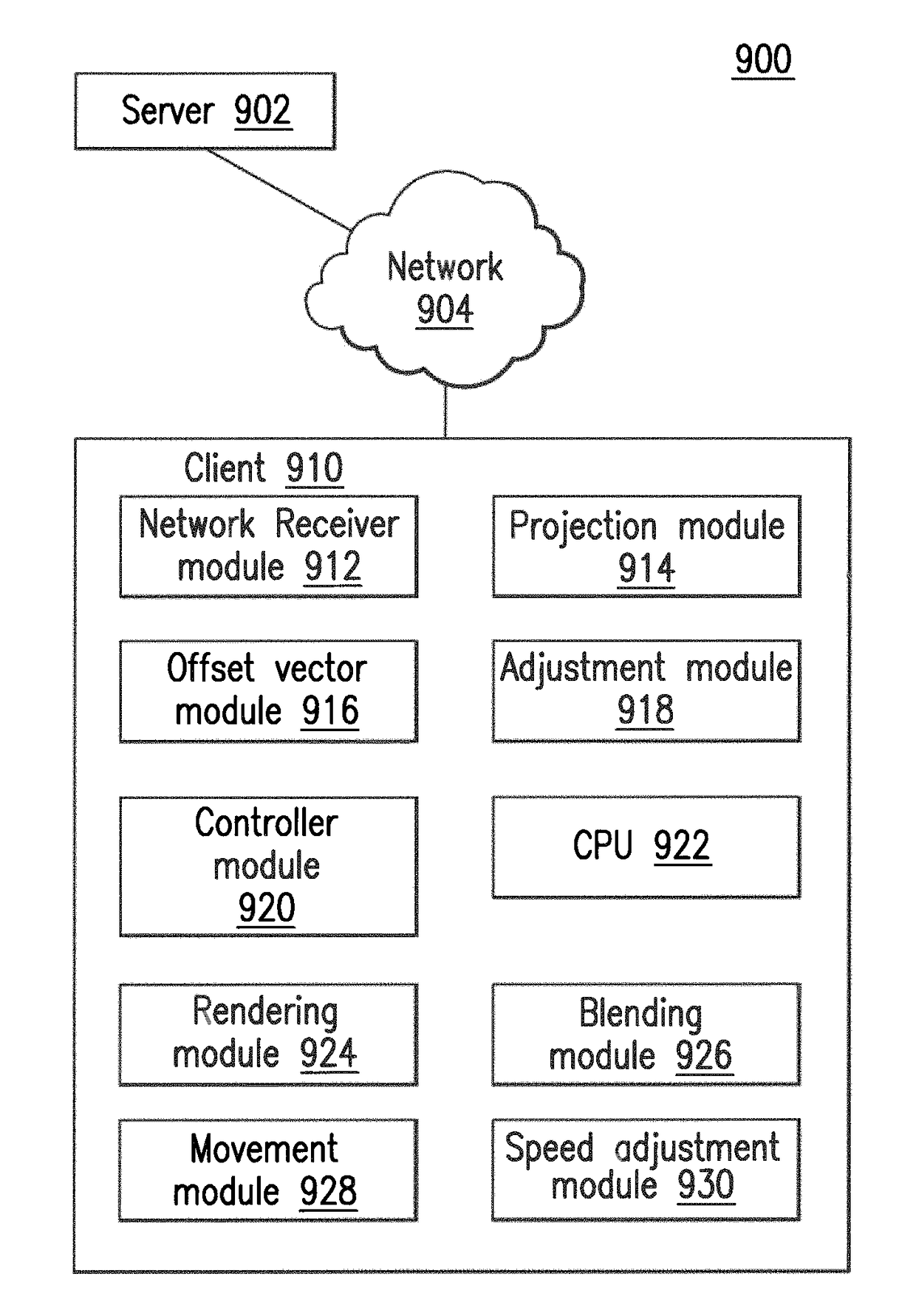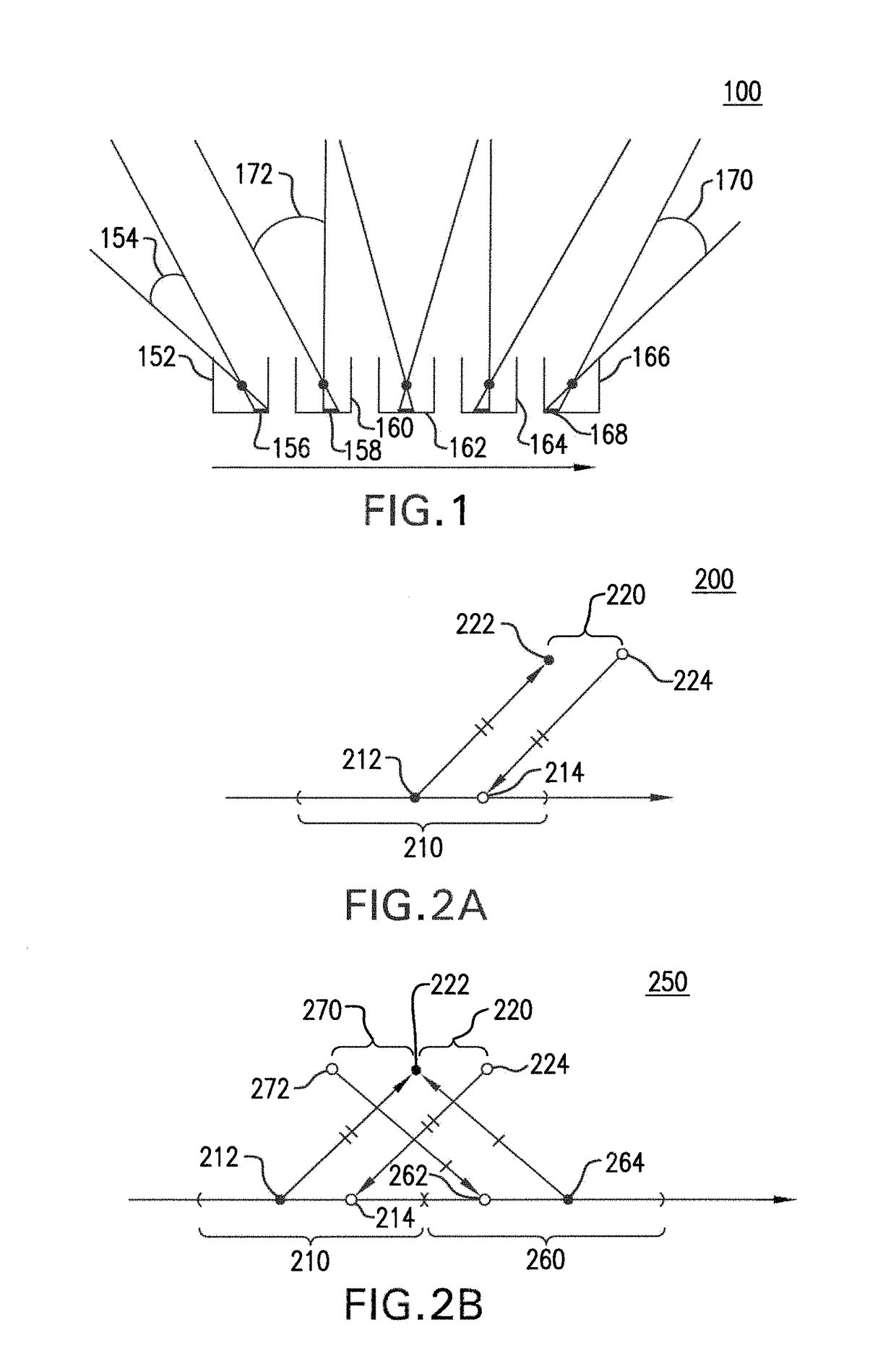Offset rolling shutter camera model, and applications thereof
a camera model and rolling shutter technology, applied in the field of projecting image data, can solve problems such as large computing resources, errors become apparent, and texture maps may not properly correspond to three-dimensional models
- Summary
- Abstract
- Description
- Claims
- Application Information
AI Technical Summary
Benefits of technology
Problems solved by technology
Method used
Image
Examples
Embodiment Construction
[0022]Embodiments efficiently account for variations in camera position across an image when the image is texture mapped from a single position associated with the image. To account for these variations, the position of projected pixels are offset by a distance determined according to a speed of the vehicle and a time offset of the pixel's exposure.
[0023]Some embodiments account for errors associated with use of a single geocode for a panorama that was captured from multiple positions over time. In an example operation, a client may receive, from a server, a mask corresponding to each panoramic image. Each mask may have a value corresponding to each pixel of the corresponding panoramic image. The value at each pixel may represent a time offset value indicating when that pixel was captured by the panoramic camera relative to other pixels in the image. In addition to the masks, the client may receive, from the server, a velocity value representing a speed that the panoramic camera was...
PUM
 Login to View More
Login to View More Abstract
Description
Claims
Application Information
 Login to View More
Login to View More - R&D
- Intellectual Property
- Life Sciences
- Materials
- Tech Scout
- Unparalleled Data Quality
- Higher Quality Content
- 60% Fewer Hallucinations
Browse by: Latest US Patents, China's latest patents, Technical Efficacy Thesaurus, Application Domain, Technology Topic, Popular Technical Reports.
© 2025 PatSnap. All rights reserved.Legal|Privacy policy|Modern Slavery Act Transparency Statement|Sitemap|About US| Contact US: help@patsnap.com



